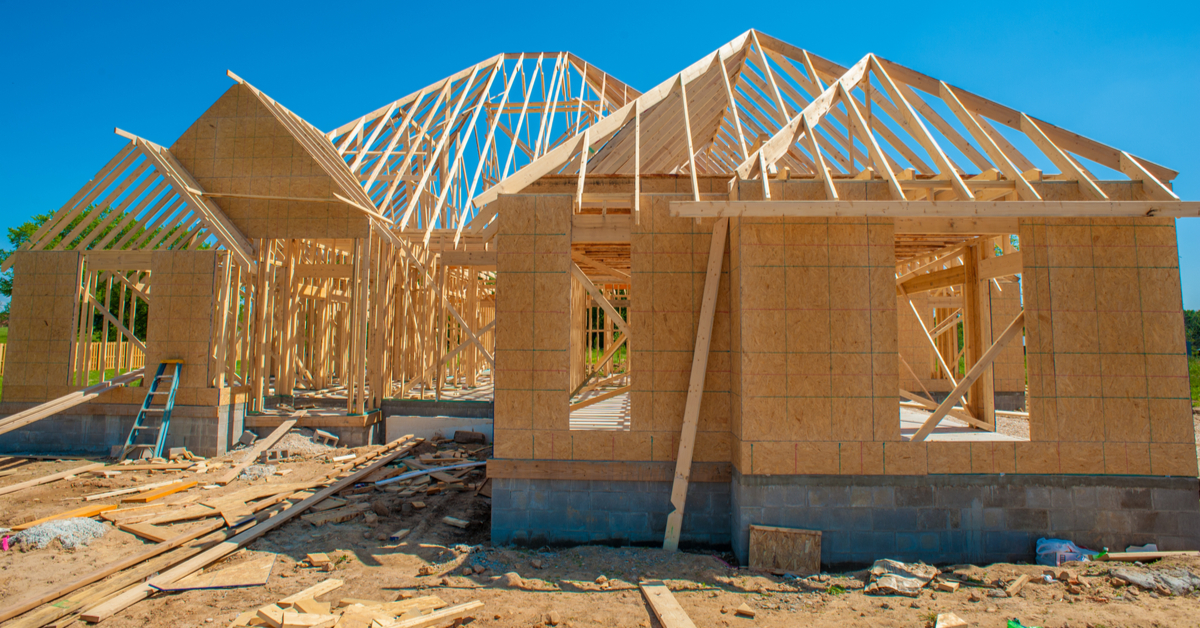Housing starts continued to tumble in April, falling 30.2% from March to a seasonally adjusted annual rate of 891,000 units, according to the latest numbers from the U.S. Census Bureau and the U.S. Department of Housing and Urban Development (HUD).
That’s the lowest level of homebuilding starts since the first quarter of 2015. And while a large decline was widely expected, April figures still undershot expectations, with a Reuters poll of economists projecting an April rate of 927,000.
The over-30% monthly freefall from March’s revised estimate is also a record, underscoring the dramatic impact the coronavirus pandemic continues to have on the housing market and the economy at large.
Single-family starts were at a rate of 650,000 units, falling 25.4% month over month to a five-year low. Since February, the pace of single-family housing construction has now fallen 37%, observed Robert Dietz, chief economist for the National Association of Home Builders.
Starts for units in buildings with five units or more were at 234,000, down 40.3% from March to keep up a big multifamily building slowdown that began the prior month.
Year-over-year housing start numbers were likewise grim, with overall housing starts plummeting 29.7%. Single-family starts were down 24.8% annually, while multifamily starts dropped 38.6% from April 2019.
“April’s decline largely reflects plunges in building activity in large states, some of which did not deem home construction an essential business,” wrote the Wells Fargo Economics Group in commentary published after building numbers were released. “But activity also pulled back even in states where homebuilding was deemed essential, as builders grew cautious amidst a nearly complete lull in demand as well as growing concerns about apartment tenant demand and the ability to collect rents.”
Despite the preponderance of bleak numbers, many experts are relatively upbeat about the prospects of housing construction moving forward. Wells Fargo noted that builders have begun regaining confidence as more information became available, an observation corroborated by Monday’s NAHB/Wells Fargo Housing Market Index. That index showed a May uptick in builder confidence in the market for newly-built single-family homes — a promising development after the index saw the largest one-month decline just one month prior.
And while building permits sank 20.8% from March to a seasonally adjusted annual rate of 1.07 million, Wells Fargo suggests that the seven-figure pace could be a signal of a rebound in the months ahead.
Meanwhile, Joel Kan, associate vice president of economic and industry forecasting for the Mortgage Bankers Association, noted that completions didn’t see as big of a decrease, falling 8.1% to a seasonally adjusted annual rate of 1.18 million units. That’s an indication that builders been able to remain at least somewhat active during the crisis, at least in the parts of the country where residential construction was allowed to continue.
Kan reiterated the MBA’s forecast for “a rapid rebound in housing activity later in the year as homebuyer traffic returns,” though he added that housing supply remains very low, and the rough building report only complicates matters.
“Today’s news – combined with the April employment report showing almost one million construction job losses – may potentially slow the rebound in new construction that will be needed to completely revive the housing market,” he said.
If builder confidence holds, Zillow economist Matthew Speakman indicated that strong fundamentals do indeed remain to buttress the market despite ongoing supply woes.
“Even in a market in which many buyers have been sidelined, the supply of homes for sale remains woefully low – and the idea of a brand new, never-lived-in home may prove extra alluring these days to safety-conscious buyers that can afford the premium on new construction. And mortgage interest rates sitting at near-record lows could make that somewhat larger price tag a bit easier to swallow for certain buyers,” he said.
“A quick return to anything close to ‘normal’ is a ways off,” he added, “but with other housing metrics indicating the worst may be behind us, builders are already looking to do their part to address the ongoing inventory shortage and capitalize on relatively forgiving homebuying conditions.”
Author
-

Arnie Aurellano is chief reporter and website content editor at Scotsman Guide.


